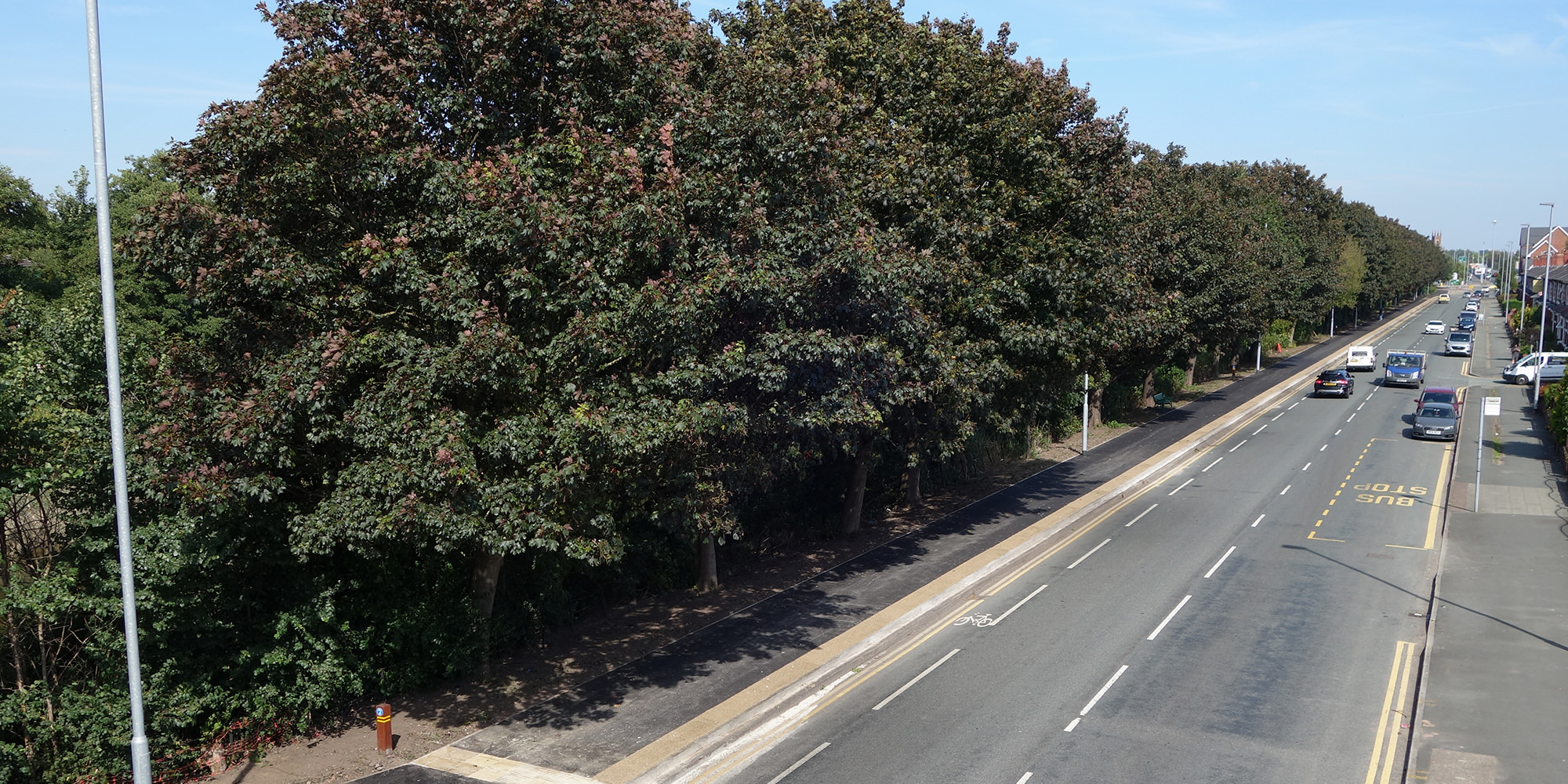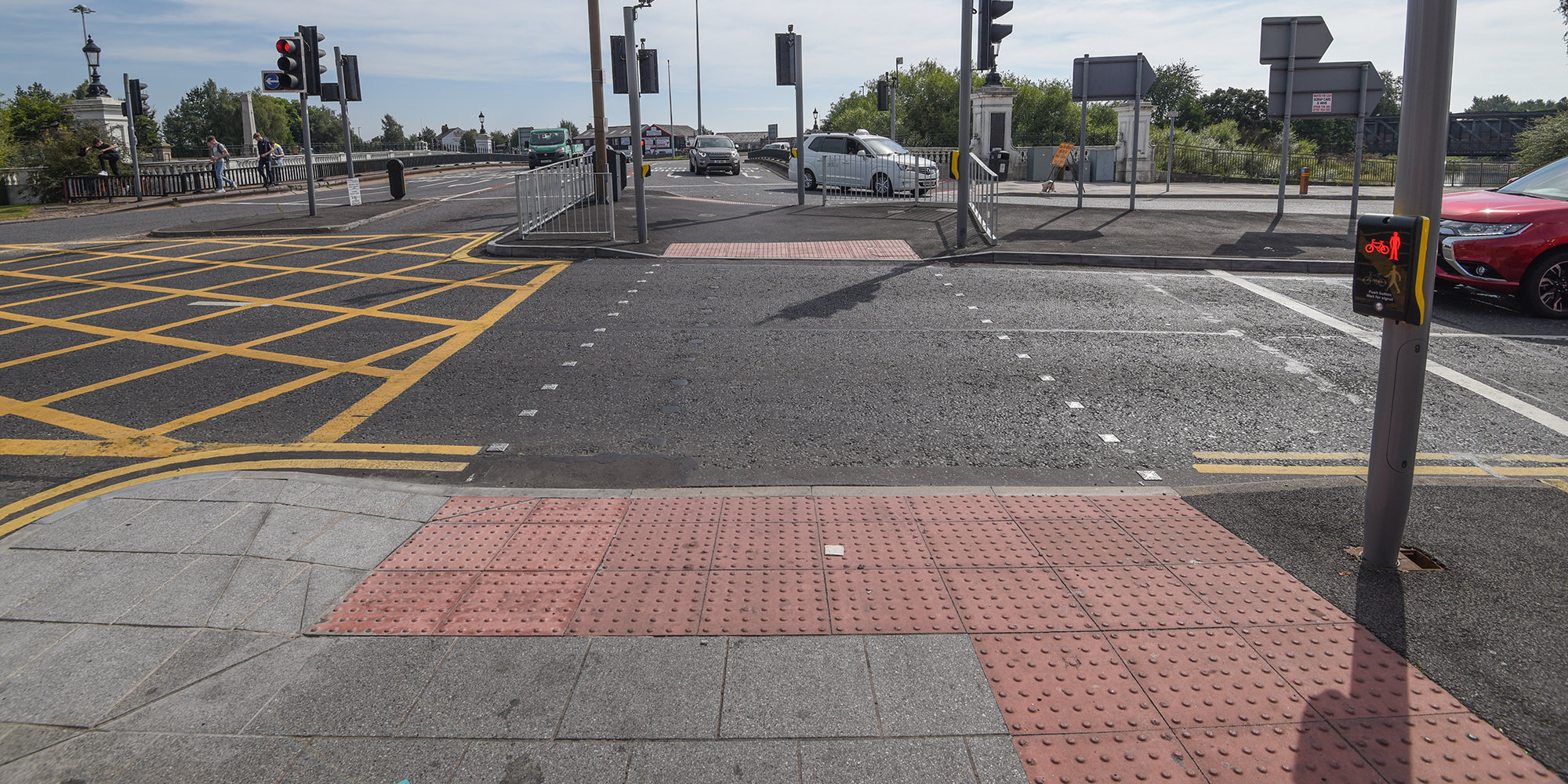The Chester Road cycleway project was conducted on behalf of our client, Warrington Council after they were successful in obtaining designated resources from the government through the Local Growth Fund. The funding enabled us to deliver a cycle and walking scheme within the clients’ Local Transport Plan with Chester Road being one of the priorities.
The objectives of the scheme were to improve pedestrian and cycleway accessibility to and from the town centre. Also, as part of the junction improvements and widening works, pedestrian and cycling facilities were to be upgraded to improve amenities The project will benefit people walking, cycling, using mobility scooters, and wheelchairs and will help people travel sustainably, healthily, and safely.
The new scheme consisted of a widened path, allowing a safer and more direct crossing experience for pedestrians and cyclists. Works comprised of:
- Site clearance works
- Tree clearance works
- Erection of permanent boundary fencing
- Earthworks including excavations
- Plane off and resurfacing of the existing carriageway
- New construction of carriageways, shared use footways/cycleways and traffic islands
- Drainage works and service ducts installation associated with the widening and construction of new carriageways and traffic signals
- New road markings and replacement of existing traffic signs and studs
- New pedestrian guardrail
- Bridge parapet guardrail
- New replacement traffic signals
- Landscape works
- New street lighting
During the scheme, we were faced with many challenges and obstacles with the key issue being the location. Chester Road is the main arterial route from Warrington to the M53 and we were limited on traffic management options. Temporary lights were not permitted therefore we appointed two traffic safety offers to operate stop-and-go boards for a maximum stretch of 50m to form lane closures as and when required, keeping disruptions to a minimum.
We were also restricted to working solely within our working area and was unable to spill onto the existing carriageway. Due to the volume of traffic, vehicles could not park or deliver around the site within working hours, therefore logistically, it was agreed to bring grab wagons to site in the evenings for deliveries and collections, ready for the next working day.
Along with the restrictions, there were numerous environmental factors to consider. Works took place against the side of River Mersey; it was crucial the watercourse was not affected by any form of contamination such as diesel spills. It also coincided with a mature tree line, therefore an arboriculturist was brought in to collaborate with us whilst digging took place, ensuring roots were not disturbed.
A major problem arose with existing invasive species such as Himalayan Balsam, Japanese Knotweed and Giant Hogweed which all had to be treated correctly. Constant boot washes and machinery cleans were undertaken by spraying with disinfectant, protecting other areas from contamination. This caused a cause for concern with health and safety as the chemicals possessed within the invasive species are a determent to operatives’ skin if touched. Especially the blisters that can be caused by contact with giant hogweed, thus PPE was changed to suit the environmental factors such as long sleeve tops.
It soon became apparent that we had to go back to the client to request a design change as issues with ground conditions were encountered. The specification was changed, and Geogrid Web was used to make sure pressure was not put on the existing roots. This was installed by cutting down the side of the footpath and laying underneath the cycleway to dissipate any weight, making sure pressure would not bore down on the root, causing damage. The membrane is also laid to combat any further issues with invasive species, as it is known to eat its way through the surfacing, causing issues further down the line. It is made up of a fleece-type material that has a copper layer and deflects all invasive species. Initially, the material was only estimated to be around 250sqm but due to the extensiveness of the invasive species, the material used was around 1800sqm.
It was aimed to achieve a weekly average of 60m of the new cycleway footpath to maintain programme, however, we exceeded the target by working on 100m per week and the programme was delivered on time. We learned the importance of communication with all involved, including operatives. subcontractors and suppliers. The pre-planning of materials around restrictions was especially critical to ensure we were ready for work without any delays. By keeping the client up to date with monthly detailed written reports, we maintained a good working relationship throughout the scheme.











